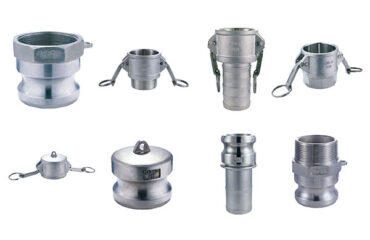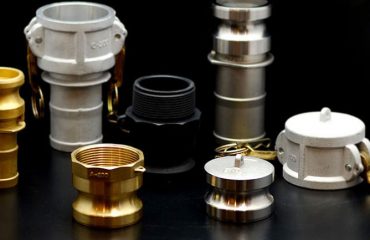Using a Camlock coupling within its specified operating limits is non-negotiable for safety and performance. Exceeding these ratings can lead to catastrophic failure, causing leaks, equipment damage, or personal injury. This guide will explain how to interpret and apply pressure and temperature ratings for your Camlock couplings.
Introduction to Camlock Ratings
Every high-quality Camlock coupling is designed and tested to perform within specific ranges of pressure and temperature. These ratings are not suggestions—they are the absolute limits for safe operation. Always ensure your application parameters fall well within these published ratings.
Understanding Pressure Ratings (PSI/Bar)
The pressure rating indicates the maximum internal pressure the coupling can safely withstand.
What Does PSI/Bar Mean?
-
PSI (Pounds per Square Inch): The imperial unit of pressure.
-
Bar: The metric unit of pressure (1 Bar ≈ 14.5 PSI).
Factors Affecting Pressure Rating:
-
Material: Stainless steel has the highest pressure rating, followed by aluminum, and then polypropylene.
-
Size: Smaller diameter couplings (e.g., 1″) typically have higher pressure ratings than larger diameters (e.g., 4″).
-
Design & Manufacturing Quality: Couplings from reputable manufacturers are rigorously tested to ensure their ratings are accurate and include a safety factor.
How to Apply Pressure Ratings:
-
Know Your System’s MAWP: Determine your system’s Maximum Allowable Working Pressure (MAWP).
-
Choose a Coupling with a Higher Rating: Always select a coupling whose pressure rating is higher than your system’s maximum pressure. Include a safety margin for pressure spikes (water hammer).
-
Example: If your system operates at 150 PSI, choose a coupling rated for at least 200 PSI or more.
Understanding Temperature Ratings (°F/°C)
The temperature rating defines the range of fluid temperatures the coupling can handle without degrading, melting, or losing its sealing capability.
Factors Affecting Temperature Rating:
-
Material:
-
Stainless Steel: Excellent high-temperature resistance (often up to 400°F+ / 204°C+). Ideal for steam and hot fluids.
-
Aluminum: Good for moderate temperatures. Performance can degrade above 250°F (121°C).
-
Polypropylene: Strictly for low-temperature applications (typically not exceeding 180°F / 82°C). Can become brittle near freezing.
-
-
Seal Material: The O-ring is often the limiting factor. Standard Buna-N seals are good to about 250°F (121°C), while Viton® or EPDM can handle higher temperatures.
How to Apply Temperature Ratings:
-
Consider Both Fluid and Ambient Temperature: Account for the temperature of the fluid inside the coupling AND the environment outside.
-
Mind the Seal: The overall temperature limit of the assembly is the lower of the coupling body rating and the O-ring rating.
The Relationship Between Pressure and Temperature
This is a critical engineering principle: As temperature increases, the pressure rating of a coupling decreases.
A coupling rated for 250 PSI at room temperature might only be safe for 150 PSI at 300°F. Always consult the manufacturer’s derating charts for specific information on how temperature affects pressure capacity. If no chart is available, applying a significant safety margin is essential.
Best Practices for Safe Operation
-
Never Exceed Ratings: Treat published ratings as maximum limits.
-
Inspect Regularly: Look for signs of wear, corrosion, or O-ring degradation that could lower the effective rating.
-
Consider the Entire System: The coupling is often the strongest part. Ensure your hoses, clamps, and pipes are also rated for the same pressure and temperature.
-
When in Doubt, Ask: If your application involves extreme conditions, always consult with the coupling manufacturer or supplier.
Download Our Technical Specifications Guide for detailed pressure and temperature ratings on all our Camlock coupling products. Ensure your operation is safe and efficient.


